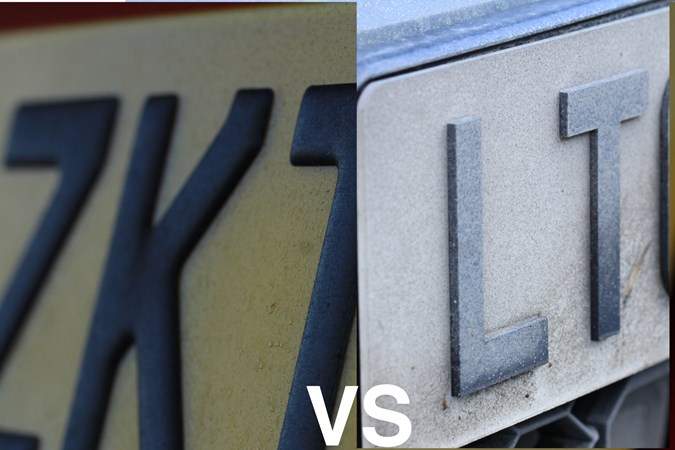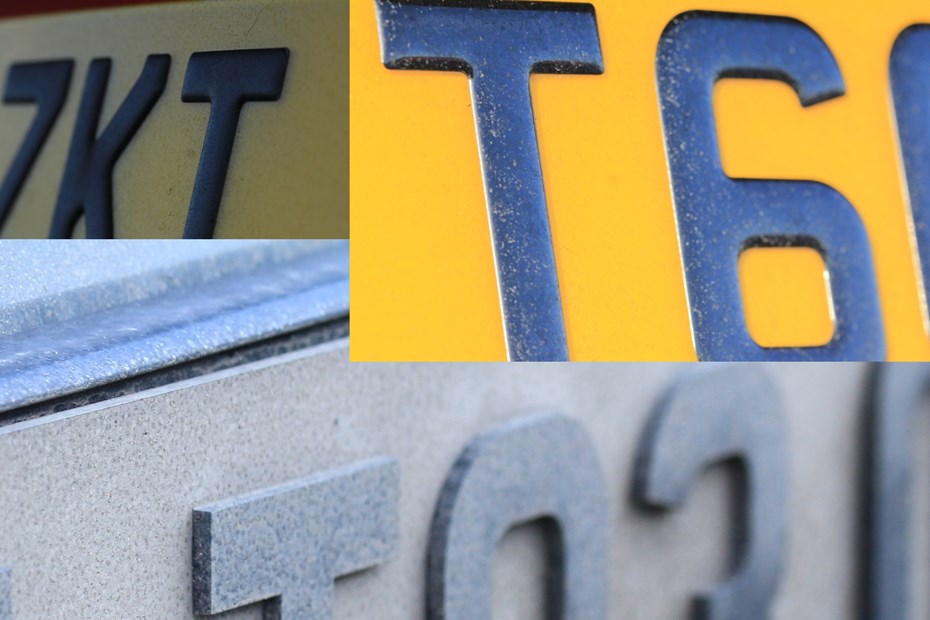When you cover many miles on motorways, urban and country roads, you can’t help but notice unusual registration plates. Whether it’s a cheeky personalised plate, or a grubby new green plate beyond being read properly (which can lend you a hefty £1,000 fine, btw), the boredom of a long drive can make us more observant.
Being human, the same applies to traffic coppers. They notice things and the general conclusion from the police is to avoid using any plate which isn’t the regular two-dimensional (2D, read: flat, plastic) plate. However, there is a lot of controversy surrounding 3D and 4D plates, that’s why here at Parkers we are here to keep you on the right side of the law.
So let’s look at how you stay legal with your bespoke registration plate, aside from keeping your vehicle clean.
What is a 3D or 4D number plate?
Most of us are familiar with 2D plates, where the printed plasticised backing attaches to a durable resin topper to withstand the wonderfully changeable weather in Blighty. These are cheap and easy-to-make and very easy to clean.
Three-dimensional and the curiously titled ‘4D’ number plates are the more interesting as their lettering and numbering are built up proud of the initial resin surface. Of course, we’ve seen a version of 3D number plates before, when old plates were stamped out in metal by a hand-operated tool, creating a bevelled appearance around each letter and number.
These days, plates with raised numbers and letters are gaining popularity as 3D printing technology becomes more accessible.
What is the difference between 3D and 4D licence plates?

These 3D plates are more common, as the tools to produce them are more widely available. The letters are cut from a polyurethane gel, creating a wet appearance. The ‘raised’ part of the plate is much softer, almost mimicking that bevelled look from classic car plates. The characters are placed by hand and, if made correctly, bond securely to the rest of the plate.
4D number plates have a sharper, more defined look. The lettering and numbering look like building blocks, such is the depth of the raised area. This is because the letters are laser cut from a sheet of acrylic. Bonded like 3D letters, 4D plates also carry a highly glossy look – not that dissimilar to gel or shellac nail varnishes.
But let’s not fool ourselves here, 4D are essentially 3D done differently. Because the fourth dimension is time, which sadly, not even your number plate can give you.
4D number plates are more expensive to produce, as fewer suppliers offer them. Each letter has to be cut out individually and suppliers offer a variety of acrylic sheets, including those containing glitter. Ooh, sparkles. They’re also a bit of a pain to keep clean.
Why do the police seize 3D and 4D plates if they’re legal?
Contrary to popular belief, the British Standard marking isn’t a guarantee that your plate is legal. Police may seize 3D and 4D number plates despite their legality if they don’t meet specific regulatory standards.
If your plates don’t have the correct font, size, or spacing, or if they’re not reflective enough, they can be considered non-compliant. Plates with raised characters that obscure the readability, or lack the British Standard mark (BS AU 145e), are also at risk. And if any customisation makes the plates hard to read, they can be taken off your car.
In 2021 more stringent rules came into force, prohibiting the use of more than one shade of black on a plate, since ANPR and speed cameras were struggling to read the plates.
The changes in September 2021 also clarified the position on 3D and 4D plates. The Government said: ‘The new British Standard for retroreflective number plates does not state that number plates with raised characters, including 3D gel and 4D number plates, will not be permitted.’
Parkers editor Keith Adams commented, ‘This lack of clarity is generating uncertainty about whether you can use these plates or not, and while that’s the case, having them could well cause problems down the line. I have approached the DfT for a response, and am still waiting. So, while 3D and 4D plates can add some flair and individuality to your car, please make sure they tick all the legal boxes to avoid an unwanted run-in with the law.’
FAQs
-
Will 3D number plates pass an MoT?
Yes, your car can pass its MoT with 3D plates, provided they meet legal requirements. However, if the 3D plates display characters in a non-compliant colour or font, or fail to adhere to other regulations, your car may not pass the MOT inspection.
-
Can cameras see 4D plates?
Though 4D number plates differ slightly from traditional plates, they are still indefinably by automatic number plate recognition (ANRP) cameras. If your 3D or 4D plate isn't recognisable by an ANRP camera its likely that your plate doesn't meet the specifications of the law.
-
Do 3D and 4D plates cost more than standard plates?
Yes, 3D and 4D plates typically cost more than standard plates due to the additional materials and manufacturing processes involved. Generally, a 3D number plate can range from £30 to £50, while a 4D plate can cost between £40 and £70. However, opting for additional features or customizations can increase the price further.
Just so you know, we may receive a commission or other compensation from the links on this website - read why you should trust us.






